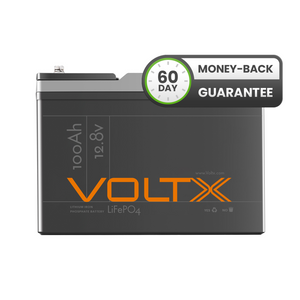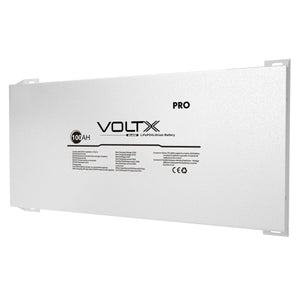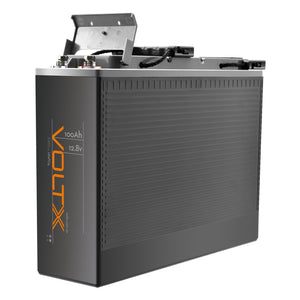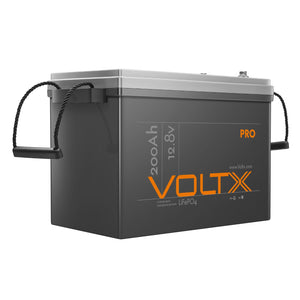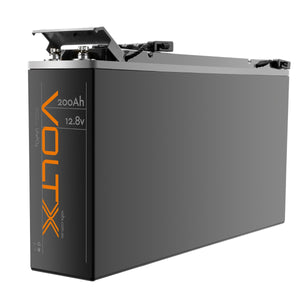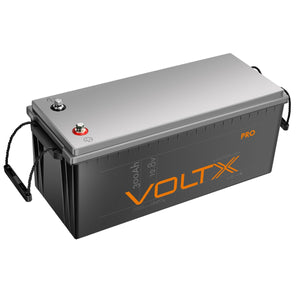Reliable power is absolutely crucial for those classic Aussie adventures, whether you're planning camping trips, caravanning holidays, or a weekend out on the boat. This comprehensive guide is your go-to resource, covering everything you need to know about how to charge a deep-cycle battery correctly and safely. We'll help you understand your battery and select the right deep cycle battery charger to keep it in top nick, ensuring you have effective power solutions for camping and beyond. Proper charging deep cycle batteries isn't just about getting power; it's about maximising your battery's lifespan and ensuring you've got consistent, dependable energy whenever you're off the beaten track.
Understanding Your Deep Cycle Battery
Before diving into charging, it's vital to get a grip on what a deep cycle battery actually is. These powerhouses are distinct from standard car starter batteries, as they are designed for sustained power output rather than short, sharp bursts to start an engine. This makes them indispensable for running appliances and electronics during camping, caravanning, boating, and in off-grid 12V power systems. You'll commonly encounter a few main types: AGM (Absorbent Glass Mat) batteries are popular for their maintenance-free design and vibration resistance, making them great for a 4WD or caravan; Gel batteries offer excellent performance in a wide range of temperatures; and Lithium (specifically Lithium LiFePO4 deep cycle battery) options are increasingly favoured for their light weight, long life, and efficiency. Understanding these fundamentals is the first step towards effective battery care.
Why Proper Charging is Crucial for Battery Health and Performance
Getting the charging process right isn't just a suggestion; it's fundamental to your battery's longevity and reliability, directly impacting overall battery health. Correct charging deep cycle batteries techniques can significantly extend the life of your unit and ensure it performs when you need it most, especially when you're relying on it in remote locations. Both undercharging and overcharging can have serious negative consequences: undercharging often leads to sulfation in lead-acid types, which reduces capacity, while overcharging can cause irreversible damage, shorten lifespan, and even pose safety risks. Emphasising proper charging maximises the battery's lifespan and the number of charge/discharge cycles it can endure, leading to a long lifespan deep cycle battery. This commitment to good battery maintenance translates directly to dependable performance, crucial for powering essentials "out bush" or on the water.
Selecting the Best Deep Cycle Battery Charger for Your Needs
Choosing the right deep cycle battery charger is just as important as the charging technique itself, as it's the key to ensuring your battery receives the optimal charge for its specific chemistry and capacity. This section will walk you through the key considerations to ensure you pick a battery charger for a deep cycle battery that’s perfectly matched to your battery type and your power needs, looking at different charger technologies and what features make a real difference for various conditions.
Match the Charger to Your Battery Chemistry
Different battery types, such as AGM, Gel, and LiFePO4, have unique charging requirements, including specific voltage and current profiles. For instance, lithium batteries, particularly LiFePO4 types, need a dedicated lifepo4 battery charger or a charger with a specific lithium setting to accommodate their precise needs and prevent damage. Using a charger not designed for your battery's chemistry can lead to inefficient charging, reduced lifespan, or even battery failure. Therefore, always ensure your lithium battery charger is compatible if you're using this advanced battery technology.
Consider Battery Capacity and Charger Output
The capacity of your battery, measured in Amp Hours (Ah) – for example, a 100Ah deep cycle battery – significantly influences your charger selection. Charger specifications, such as voltage (e.g., a 12V battery charger) and amperage (current output), dictate how quickly and effectively your battery will charge. A general rule is that the charger's amp-hour output should be around 10-20% of the battery's Ah rating for lead-acid types, though LiFePO4 batteries can often handle higher charge rates. A charger with too low an amperage will take an excessively long time to charge, while one that's too high for the battery type could cause damage.
The Advantages of a Smart Battery Charger
A smart battery charger, also known as a multi-stage charger, represents a significant advancement in battery care technology. These chargers automatically adjust the charging process through various stages (like bulk, absorption, and float), which prevents overcharging, optimises battery health, and can even include features for battery reconditioning. Their ability to switch to a maintenance or float mode makes them ideal for long-term connection, perfect for a caravan battery charger setup where batteries might be left on charge between trips, ensuring your deep cycle battery charger maintains the battery in peak condition without risk.
How to Charge a Deep Cycle Battery Step by Step
Now for the practical bit! This step-by-step guide will clearly outline how to charge a deep cycle battery safely and effectively, ensuring you're using your deep cycle battery charger correctly from initial setup to knowing when your battery is ready to go. Following these instructions carefully is key to charging a deep cycle battery properly and getting the most out of your power system, especially when learning how to charge a deep cycle battery with a battery charger for the first time.
Safety First: Gear Up and Check Your Surroundings
Before you even think about connecting your charger, safety is paramount. Always work in a well-ventilated area, particularly when charging lead-acid batteries as they can produce hydrogen gas. It's highly recommended to wear appropriate safety gear, including gloves and eye protection. Lastly, give your battery a quick inspection for any visible damage, cracks, or leaks before proceeding with connecting your 12v deep cycle battery charger.
Connecting Your Deep Cycle Battery Charger Correctly
The correct connection process is crucial for efficient and safe charging. Typically, you'll connect the positive (red) clamp from your deep cycle battery charger to the positive terminal on your battery, and then the negative (black) clamp to the negative terminal. Ensure the battery terminals are clean and the connections are secure to prevent poor conductivity and inefficient charging. The generally recommended order is to connect the clamps to the battery first, then plug the charger into the mains power. When disconnecting, reverse the process: unplug the charger from the mains first, then remove the clamps.
Understanding the Charging Stages (for Smart Chargers)
If you're using a smart deep cycle battery charger, it will typically manage the charging process through several stages to optimise battery health. Common stages include 'Bulk', where the charger delivers a high current (amps) to quickly bring the battery up to a significant portion of its charge; 'Absorption', where the voltage (volts) is held constant while the current gradually decreases as the battery nears full charge; and 'Float', a maintenance stage where a low voltage is applied to keep the battery topped up without overcharging. Understanding these stages helps you know what your charger is doing and why.
Monitoring the Charge and Knowing When It Is Fully Charged
Most modern deep cycle battery chargers have indicator lights that show the charging status (e.g., charging, full, or fault). Familiarise yourself with what these indicators mean for your specific charger model. For a more precise check, especially if your charger doesn't have a clear 'full' indicator or if you want to double-check, you can use a voltmeter to measure the battery's voltage. While good smart chargers are designed to prevent overcharging, it's still good practice to understand when your battery is fully charged and to disconnect it if the charger isn't intended for long-term maintenance.
Tailoring Charging for Different Deep Cycle Battery Types
Not all deep cycle batteries are created equal, and their charging needs can vary significantly. This section delves into specific considerations for charging deep cycle batteries of the most common types you'll find, with a special focus on LiFePO4 batteries given their increasing popularity for their performance benefits, such as when using a 12V 100Ah lithium lifepo4 battery.
Charging AGM and Gel Deep Cycle Batteries
When charging AGM deep cycle battery types and Gel batteries, it's important to note that while their charging process is similar to traditional flooded lead-acid batteries, they can be more sensitive to overcharging and may require specific voltage settings. Always ensure your deep cycle battery charger has the correct profile or settings for AGM or Gel batteries to prevent damage and maximise their lifespan. Over-voltage can cause drying out of the electrolyte in AGM batteries or damage to Gel structures.
Charging Lithium LiFePO4 Deep Cycle Batteries Effectively
Lithium LiFePO4 batteries often require a specific LiFePO4 battery charger or a charger with a dedicated lithium mode because their charging profile, particularly the required voltages, differs significantly from lead-acid types. Using the correct lithium battery charger is crucial for achieving their renowned long lifespan and enabling fast charging deep cycle battery capabilities. Many LiFePO4 batteries incorporate an Advanced BMS (Battery Management System) which plays a vital role in protecting the battery from overcharge, over-discharge, and extreme temperatures, contributing to safe and efficient charging of lithium deep cycle battery units.
Essential Charging Know-How: Tips and Troubleshooting
Even with the best gear and intentions, questions and occasional issues can pop up when charging deep-cycle batteries. This section covers some frequently asked questions about charging times, the compatibility of different chargers (some may still refer to a deep cell battery charger, an older term), and using alternative power sources like solar, all common queries for campers and adventurers.
How Long to Charge Deep Cycle Battery: A General Guide
The time it takes to charge a deep cycle battery depends on several factors: the battery's capacity (Ah), its depth of discharge (DoD), and the charger's output current (amps). For a rough guide on how long to charge deep-cycle battery units, you can divide the amp-hours needing to be replaced by the charger's amp rating. For example, a 100Ah lithium battery discharged by 50% (so 50Ah to replace) with a 10A charger would theoretically take around 5 hours, though efficiency losses mean it's often a bit longer, especially during the absorption stage.
Using a Regular Car Charger: Is It a Good Idea?
A common question is, can you charge a deep cycle battery with a normal battery charger designed for car starter batteries? While it might seem tempting in a pinch, it's generally not recommended. Standard car chargers are designed for rapid, high-current charging of starter batteries and often lack the multi-stage charging profiles needed for deep cycle batteries. This can lead to overcharging, sulfation, and ultimately, damage to your deep cycle battery, significantly reducing its lifespan. A dedicated deep-cycle battery charger or a smart charger is always the superior and safer choice.
Charging with a Solar Panel: Key Considerations
Using a solar panel to charge deep-cycle battery systems is a fantastic and popular option for off-grid power. However, it's crucial to use a good-quality solar charge controller between the panel and the battery. This device regulates the voltage and current from the solar panel, preventing overcharging and protecting your battery. Some advanced chargers also function as a trickle charger or even incorporate a battery desulfator mode, though solar controllers primarily focus on efficient and safe charging from solar input.
Final Pointers for Peak Battery Performance
To wrap things up, here are a few key takeaways to ensure your deep cycle battery gives you reliable power for many adventures to come. Think of this as your quick checklist for battery maintenance and charging best practices. By consistently using the correct deep cycle battery charger matched to your battery type and chemistry, you're already halfway there. For optimal long-term health, especially if the battery is stored for extended periods, engage in regular maintenance charging; the float mode on a smart charger for deep cycle battery units is perfect for this, sometimes referred to as a battery conditioner function. These simple practices lead to a longer-lasting, more reliable battery, meaning less worry and more enjoyment on your trips.
Frequently Asked Questions
What's the best type of deep-cycle battery charger for my specific battery?
The best deep cycle battery charger is one that matches your battery's chemistry (e.g., LiFePO4, AGM, Gel) and its capacity (Ah). Smart chargers with multiple stages are highly recommended as they provide optimal charging and can help extend battery life. Always check the charger's specifications against your battery's requirements.
How can I tell if my deep-cycle battery is fully charged?
Most modern deep-cycle battery chargers have indicator lights (e.g., green light for full, or changing from 'charging' to 'float'). A smart charger will typically switch to a float or maintenance stage. For a more precise reading, you can use a voltmeter; a fully charged 12V lead acid battery will typically read around 12.7V or higher (LiFePO4 will be higher, around 13.3-13.4V at rest after charging).
Can I leave my deep cycle battery charger connected continuously?
Modern smart battery chargers with a float/maintenance mode are designed for continuous connection and will keep your battery topped up without overcharging. This is often better than a simple trickle charger which might not have the same intelligent control. However, older or basic chargers without these features should not be left connected indefinitely as they could overcharge and damage the battery.
How often should I charge my deep-cycle battery if it's not in use?
If your battery is not in use, it will still slowly self-discharge. It's recommended to give it a top-up charge every 1-3 months, depending on the battery type and storage conditions. Alternatively, keeping it connected to a smart battery charger with a maintenance mode is an excellent way to ensure it's always ready.
Can I use a regular car battery charger for my deep-cycle battery in an emergency?
While you might consider it in an absolute emergency if it's your only option, it's highly advised against. As asked, "can you charge a deep cycle battery with a normal battery charger?" – the answer is generally no for long-term health. Regular car chargers can easily overcharge and damage a deep cycle battery. If you must, monitor it very closely and disconnect it as soon as possible.
